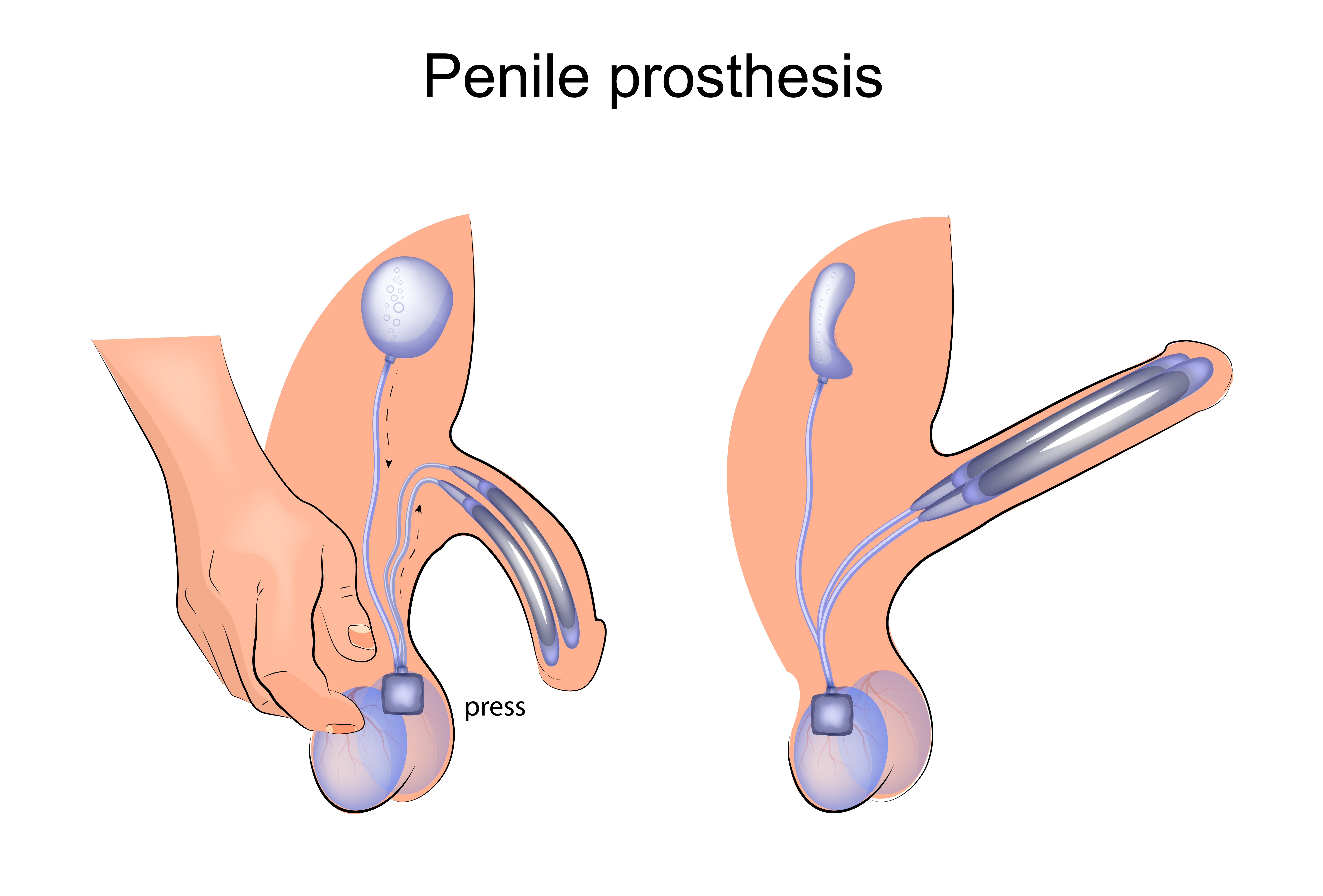Home / Erectile Dysfunction
Erectile Dysfunction
Surgical Treatment for Erectile Dysfunction
Erectile dysfunction (ED), sometimes called “impotence,” is the repeated inability to get or keep an erection firm enough for sexual intercourse. The word “impotence” may also be used to describe other problems that interfere with sexual intercourse and reproduction, such as lack of sexual desire and problems with ejaculation or orgasm. Using the term erectile dysfunction makes it clear that those other problems are not involved.
What causes erectile dysfunction (ED)?
Damage to nerves, arteries, smooth muscles, and fibrous tissues, often as a result of disease, is the most common cause of ED. Diseases—such as diabetes, kidney disease, chronic alcoholism, multiple sclerosis, atherosclerosis, vascular disease, and neurologic disease—account for about 70 percent of ED cases. Between 35 and 50 percent of men with diabetes experience ED.
Lifestyle choices that contribute to heart disease and vascular problems also raise the risk of erectile dysfunction. Smoking, being overweight and avoiding exercise are possible causes of ED.
Also, surgery (especially radical prostate and bladder surgery for cancer) can injure nerves and arteries near the penis, causing ED. Injury to the penis, spinal cord, prostate, bladder, and pelvis can lead to ED by harming nerves, smooth muscles, arteries, and fibrous tissues of the corpora cavernosa.
In addition, many common medicines—blood pressure drugs, antihistamines, antidepressants, tranquilizers, appetite suppressants, and anti stomach ulcer drug—can produce ED as a side effect.
How is ED treated?
Nonsurgical treatments
The first step in treating ED is to find the underlying cause; the doctor can then decide what sort of treatment is likely to work. If the problem continues, a number of nonsurgical options can help a man gain and maintain erections.
Oral medications
Sildenafil (Viagra) was the first oral medicine approved to treat erectile dysfunction. It works by increasing the flow of blood to the penis so that a man can get an erection when he is sexually stimulated. Other oral medications that work in a similar fashion are tadalafil (Cialis) and vardenafil (Levitra).
Injections
In intracavernosal injection therapy, more commonly called penile self-injection, a man injects a small amount of medicine into the side of his penis using a tiny needle and syringe. The medicine, usually prostaglandin E1, papaverine, phentolamine, or combinations of these drugs, relaxes the blood vessels, allowing blood to flow into the penis. Injection therapy is effective in treating a wide variety of erection problems caused by blood vessel, nerve, and psychological conditions. The most common adverse side effects are pain and penile scarring (fibrosis).
Vacuum constriction device
The vacuum constriction device is a cylinder that is placed over the penis. It is operated with a hand powered or battery powered pump. When the air is pumped out of the cylinder, blood is drawn in, causing an erection. The user then maintains an erection by slipping a band off the cylinder and onto the base of the penis. The band can stay in place up to 20 minutes.
The vacuum device can be safely used to treat most causes of erectile failure. A lack of spontaneity and the fact that using the device can be cumbersome and may cause some discomfort seem to be the biggest concerns of patients.

Surgery
Surgery usually has one of three goals:
- to implant a device that can cause the penis to become erect
- to reconstruct arteries to increase flow of blood to the penis
- to block off veins that allow blood to leak from the penile tissues
Implanted devices, known as prostheses, can restore erection in many men with ED. Possible problems with implants include mechanical breakdown and infection, although mechanical problems have diminished in recent years because of technological advances.
The prosthesis does not change sensation on the skin of the penis, a man’s ability to reach orgasm, or ejaculation. Scars from the surgery are small; most people won’t notice that a man had an inflatable penile implant. Between 90 and 95 percent of inflatable prosthesis surgeries result in implants that produce erections suitable for intercourse. Possible complications from the surgery include uncontrolled bleeding, infection, scar tissue formation, and mechanical failure.
Surgery to repair arteries can reduce ED caused by obstructions that block the flow of blood. The best candidates for such surgery are young men with discrete blockage of an artery because of an injury to the crotch or fracture of the pelvis. The procedure is almost never successful in older men with widespread blockage. Surgery to veins that allow blood to leave the penis usually involves an opposite procedure—intentional blockage. Blocking off veins (ligation) can reduce the leakage of blood that diminishes the rigidity of the penis during erection.
It must be stressed that very few men are potential candidates for vascular reconstructive surgery. In addition, extensive testing is required of men prior to undergoing this type of surgery.
Although moderately effective, with a 40-50% success rate, the long-term effectiveness of vascular reconstructive surgery is generally only 2 years or less. Also, vascular reconstructive surgery is very expensive and associated with a relatively high relapse rate.
